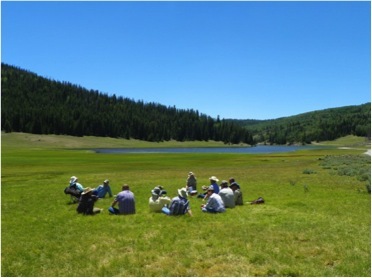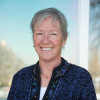by Michele Straube for EDR Blog.org –
 Politicians on both sides of the public lands debate should be lauded for suggesting field trips. Such outings have the potential to foster true dialogue and could form the basis of a constructive problem-solving conversation.
Politicians on both sides of the public lands debate should be lauded for suggesting field trips. Such outings have the potential to foster true dialogue and could form the basis of a constructive problem-solving conversation.
The Tribune’s August 7 editorial on this topic — “Taking a risk: Utah’s outreach could backfire” — suggests the “backfire” of an increased desire to permanently set aside more Western public lands once the visitors saw “Utah’s living wonders” in person.
Some may assume that the field trip will play out as follows: The field trip hosts (the Governor, Utah Congressmen and local Utah communities) show their guests (Congressional leaders who seek legal preservation status) public lands under consideration for permanent protection and describe the foregone resource development opportunities. They tell their guests how large percentages of federal land in western states limit local communities’ economic success. They argue that leaving the maximum amount of land open for multiple use is the only fair option.
The guests look out over the public lands and proclaim their unique beauty. They describe the potential negative impacts from resource development activities on similar lands, and envision the permanent future harm here. They argue that permanent protection of the lands from resource development is the only fair option. Both hosts and guests do not change their viewpoints significantly.
I can envision a field trip conversation that ends very differently, one that creates the power of possibility rather than confirming pre-existing assumptions about competing solutions. Instead of spending most of the field trip advocating for mutually incompatible solutions (wilderness versus multiple use), both hosts and guests ask a lot of questions to explore the underlying needs of their respective counterparts.
The hosts and local communities are interested in economic development opportunities, an outcome the guests may not disagree with conceptually. What other creative options might be imagined to build local economies? Could less unique lands provide similar resource development opportunities? If not currently available for development, could they be?
The field trip guests and their constituencies are interested in preserving unique landscapes and ecosystems for future generations. The hosts may not disagree with that outcome in concept, although they might quarrel about the exact acreage to be protected. What characteristics make these lands unique and what types of protections will maintain them over the long term? Which lands could be protected with the least impact on local economies?
In my experience as an environmental mediator, I have witnessed and facilitated conversations like this that break down interpersonal barriers and open up the space for creative problem solving. Simply standing on the same ground, looking at the same things, and talking about what the different eyes see often creates the turning point, the common ground as it were, from which workable solutions can emerge. The parties’ underlying values and needs are often compatible, but the solutions they come in with might not be.
The biggest risk in the public lands debate is that those who currently disagree will once again retreat to their corners and continue fighting for the only solution they can envision. Although it is risky (and, yes, scary) to engage in dialogue about what really matters to the various stakeholders, this may well be the only path to resolution of this long-standing issue. It is time to take a risk, to take steps to ensure that each party’s underlying goals are understood and taken into account, and to create the opening for a problem-solving conversation. One that allows creative ideas to emerge that can meet all legitimate goals but does not advocate for any particular pre-conceived solution.
This blog entry was also published as an OpEd in the Sunday 8/17/14 Salt Lake Tribune.

Michele Straube is Director of the Environmental Dispute Resolution Program at the Wallace Stegner Center for Land, Resources and the Environment, S.J. Quinney College of Law, University of Utah.
